(Clicking on any of the images will enlarge it. In many cases, clicking a second time will make it even bigger)
At the end of November (2016) I had a chance to visit Villena.
The town is located in the province of Alicante, but is just over a half hour distant from Xàtiva by train.
Those who are familiar with Spanish literature might know of the nephew of King Alfonso X “el Sabio”, Don Juan Manuel. Living in the 14th century, this Prince of Villena wrote a number of books and is considered one of the most important authors of his era. His series of stories involving the “Conde Lucanor” are delightful.
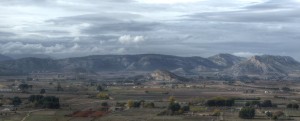 Villena also has some fame for footwear and wines produced in the area. It was the birthplace of Ruperto Chapi, composer of symphonies and zarzuelas (a Spanish cross between a musical and opera).
Villena also has some fame for footwear and wines produced in the area. It was the birthplace of Ruperto Chapi, composer of symphonies and zarzuelas (a Spanish cross between a musical and opera).
Tourist attractions in the town include a lovely 11th century castle, and the “Tesoro de Villena” (treasure of Villena), which was a trove of gold bowls and bracelets that have been dated to the bronze age 3,000 years ago.
Heading into town, I encountered the church of Santiago (Saint James) and a small plaza with municipal buildings
It was pleasing to see a banner hanging from the town hall which read: “In favor of a Europe with open doors. Borders kill”.
On this stormy day, the view of the Santa Maria church (15th century) with its mountain backdrop was stunn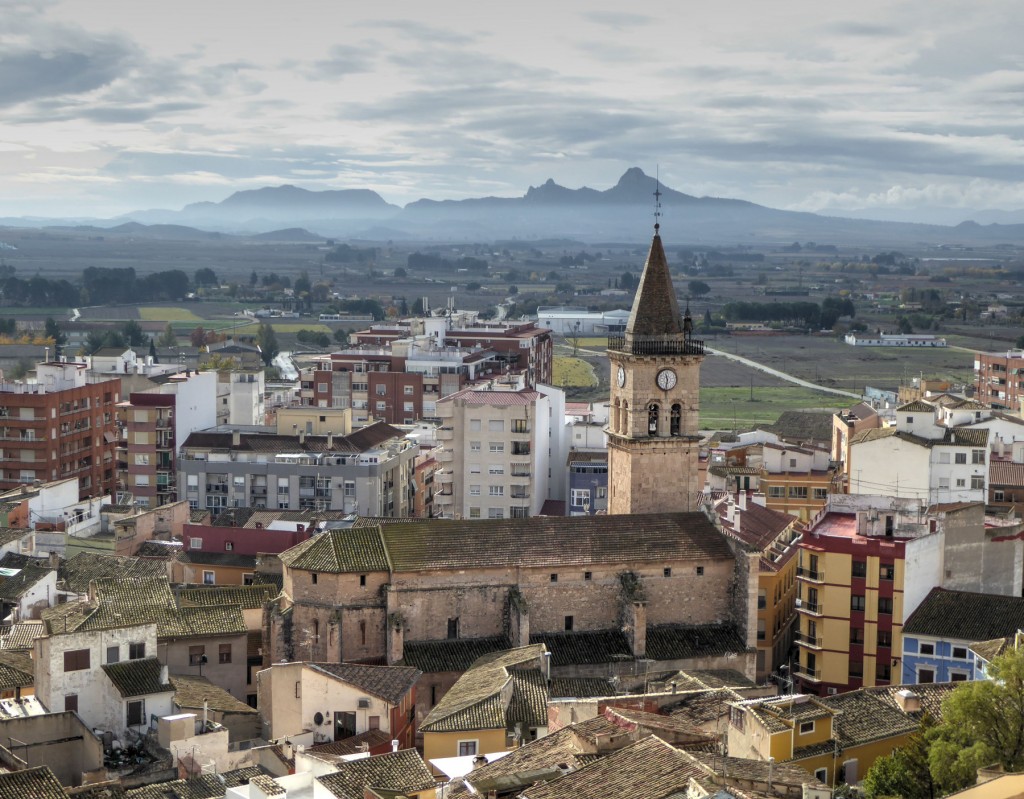 ing.
ing.
The Atalaya Castle was built in the eleventh century by the Islamic rulers of Spain. It sits on a hill more or less in the middle of town.
(Rhonda and I had attempted to visit the castle several years earlier. But at that time it was closed due to damage from an earlier lightning strike.
“Torre de Homenaje” or “Castle Keep”
Interior stairs led to the top of this inner tower, and from the top the views were phenomenal.
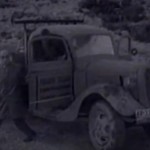
After enjoying the castle, I went to see the “Tesoro de Villena” (Treasure of Villena) which is housed in the José Maria Soler museum within the municipal building. The “Treasure” is a trove of (mostly) gold objects over 3,000 years old that were found in a large clay container. This incredible find came to light in 1963 when a worker found a large pure gold bracelet in some gravel fill being used in conjunction with the construction of a building.
The initial thought was that someone in town had dropped it. But then it was taken to authorities and the town archaeologist got involved. In conjunction with the workers, the origin of the fill material was located and excavation revealed the clay vessel which contained 28 bracelets, 11 bowls, and other miscellaneous objects. Today this valuable collection is in a locked case in the museum.
My visits to the castle and museum completed, I had enough time left in town to enjoy wandering around, exploring side streets and people watching.
Santa Maria (16th Century)


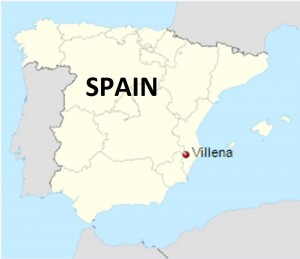
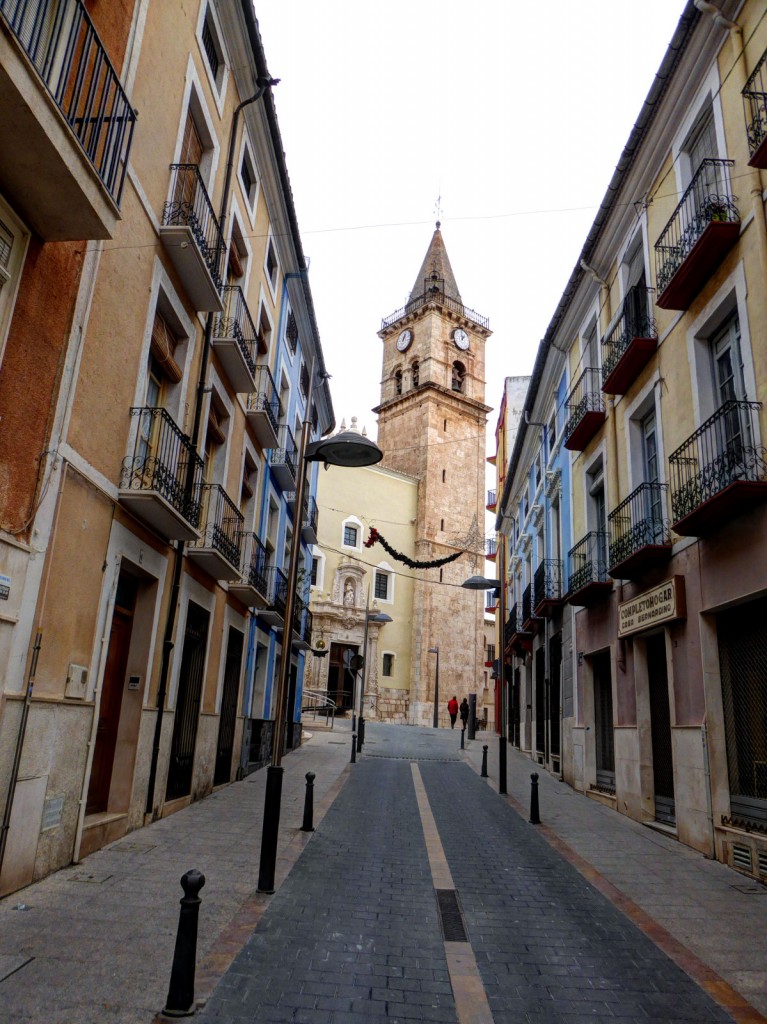
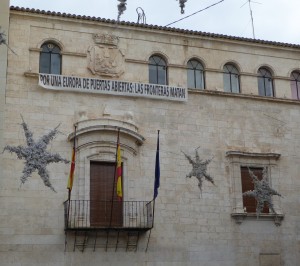
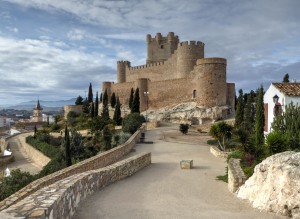
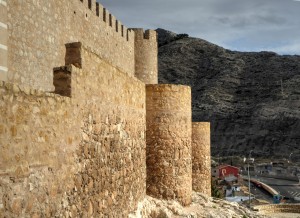
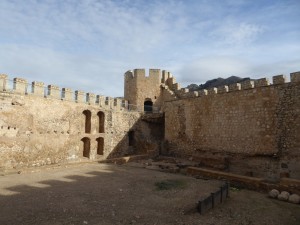
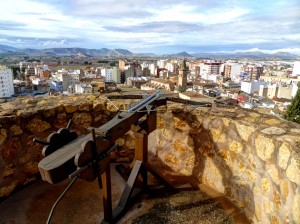
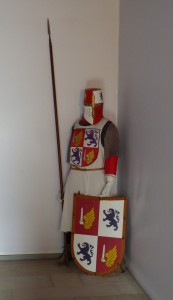
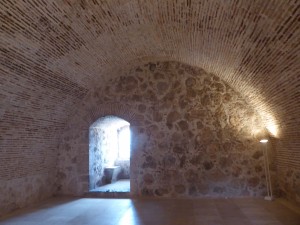
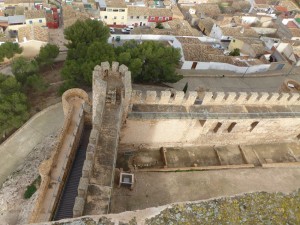
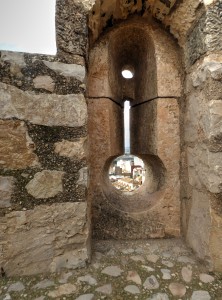
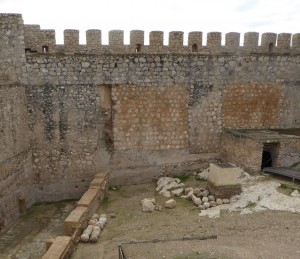
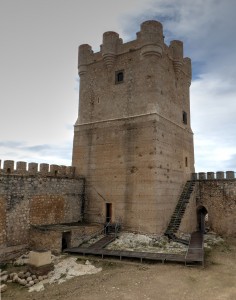
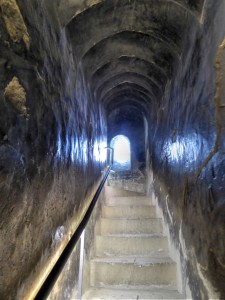
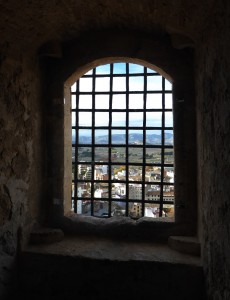
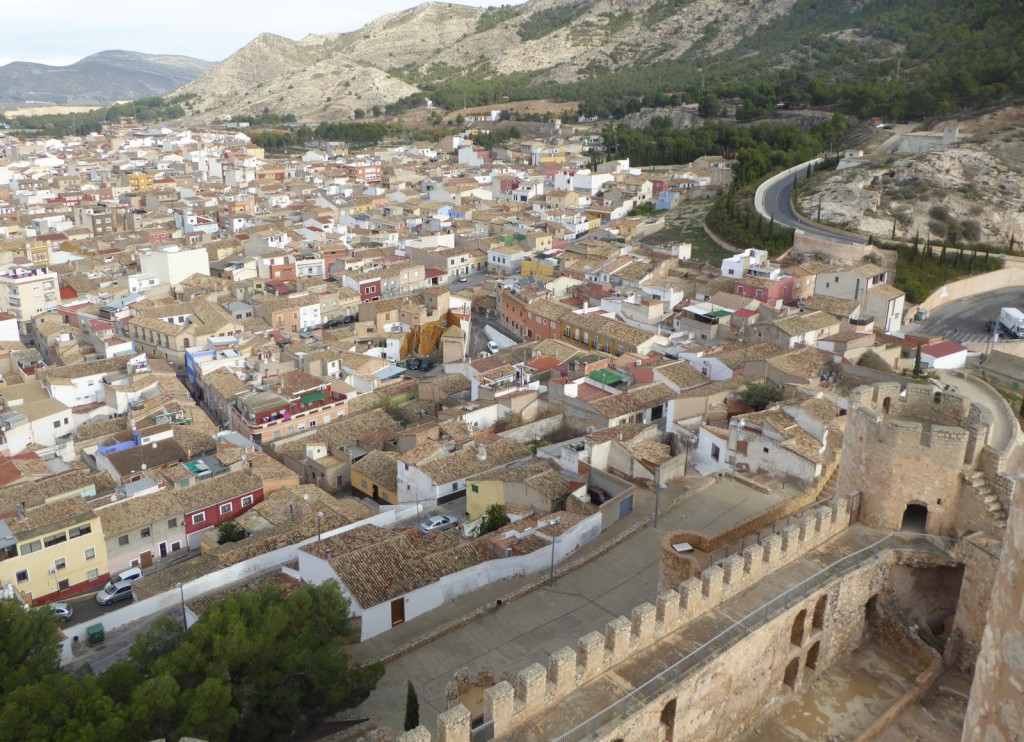
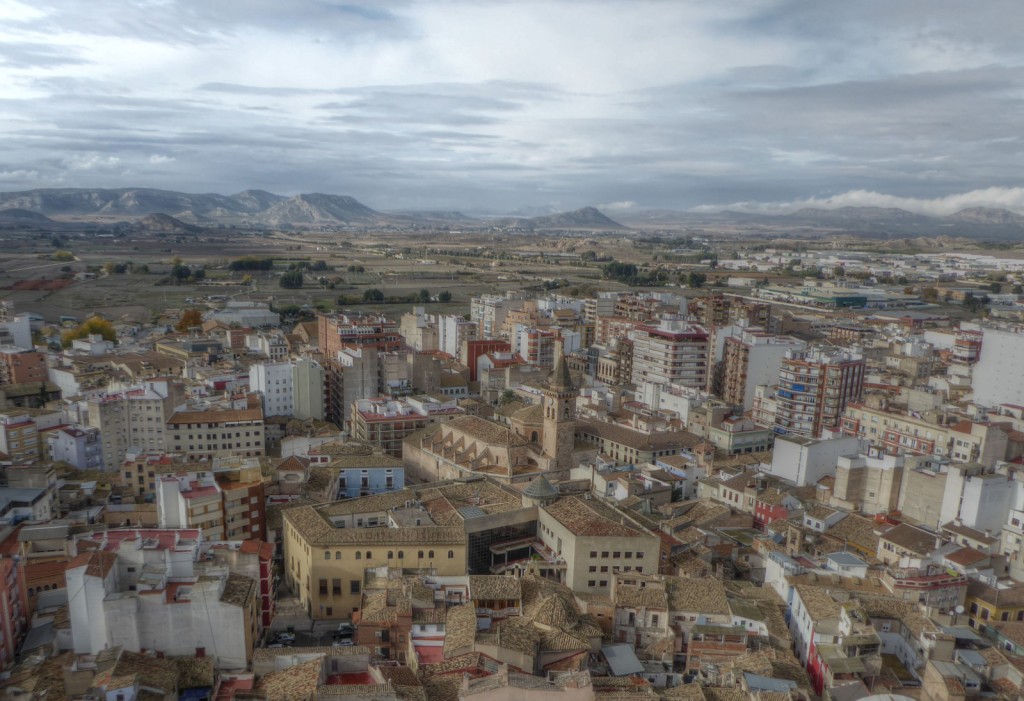
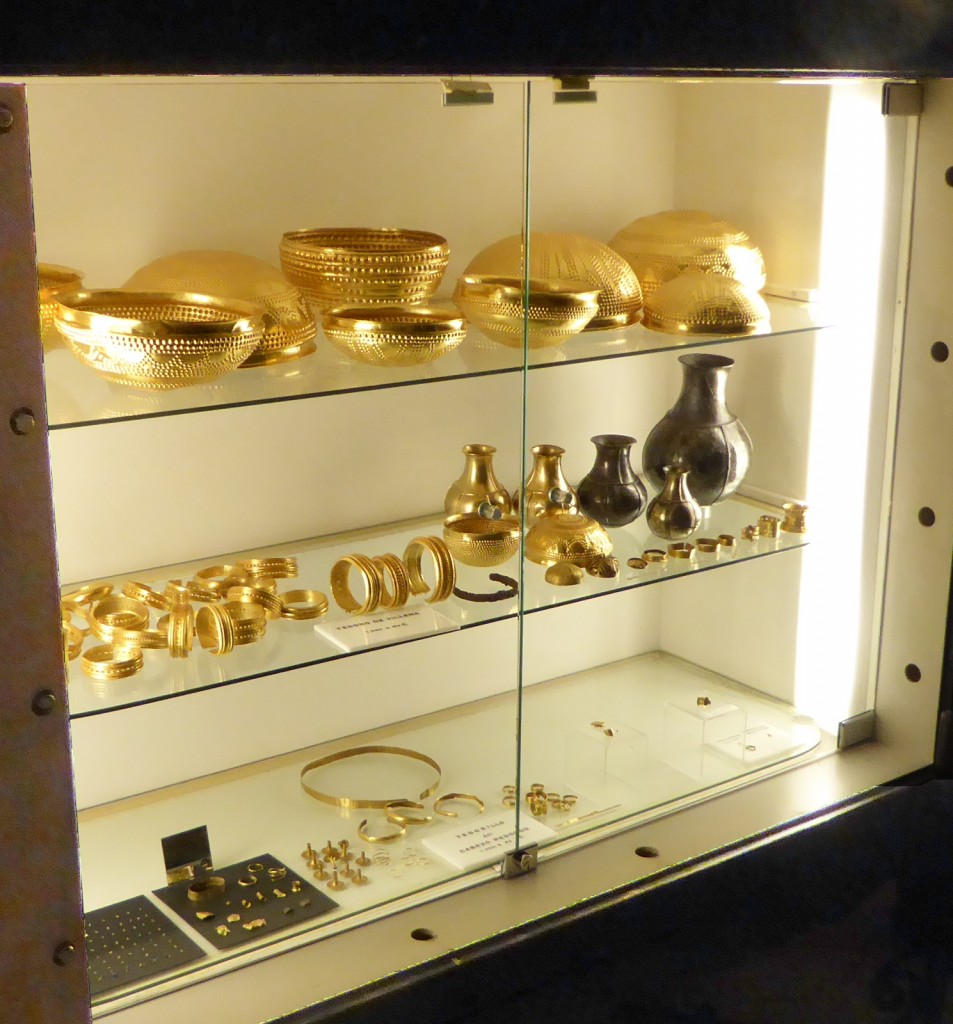
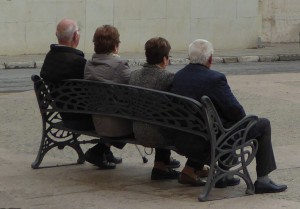
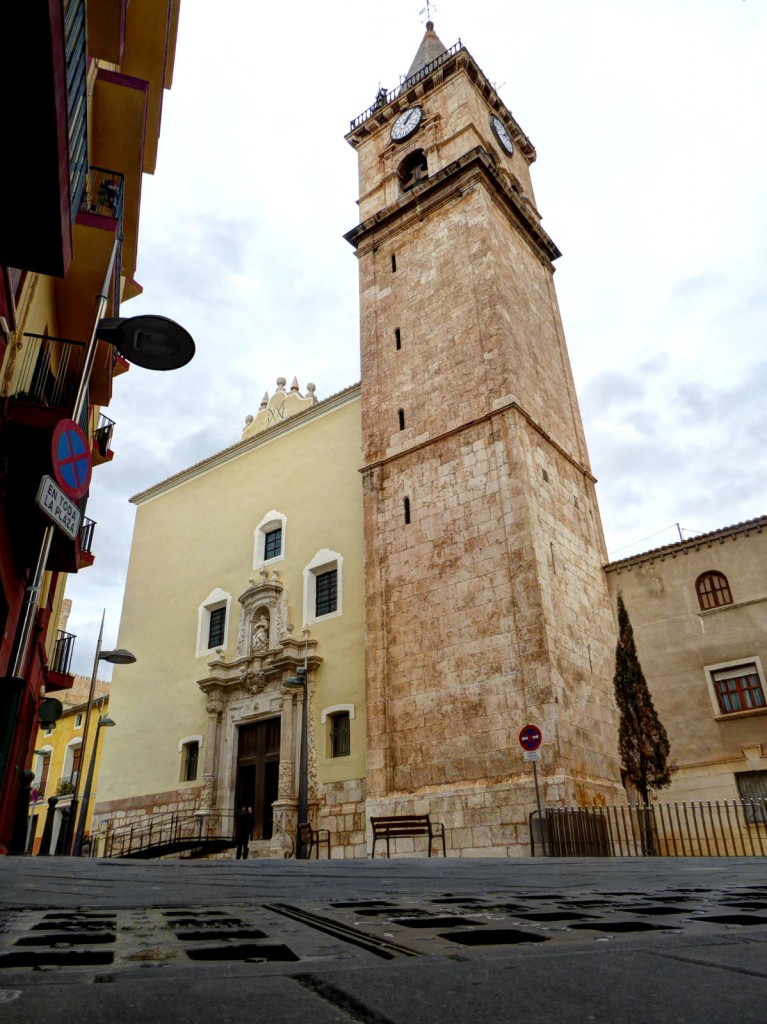
One thought on “Villena”
Comments are closed.